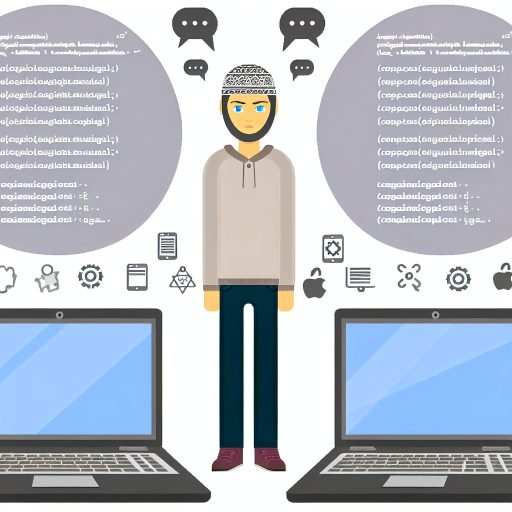Introduction to Code Libraries and Their Purpose
Code libraries play a crucial role in software development.
They streamline complex projects by providing reusable code components.
This reuse saves developers time and effort during the coding process.
Additionally, code libraries help maintain consistency across projects.
By using established libraries, developers can bypass common pitfalls.
This leads to improved code quality and fewer errors in applications.
Moreover, libraries often provide well-documented functions and methods.
This documentation aids developers in understanding how to use the components effectively.
As a result, tasks become easier and focus can shift to innovative features.
Community-driven Development
Code libraries often emerge from collaborative efforts within the developer community.
Open-source libraries are particularly beneficial as they invite contributions from many developers.
This collaboration leads to rapid improvements and enhancements.
Furthermore, community-driven libraries tend to evolve based on user feedback.
As a result, the tools become more aligned with real-world needs.
Types of Code Libraries
Various types of code libraries exist to serve different functions.
Tech Consulting Tailored to Your Coding Journey
Get expert guidance in coding with a personalized consultation. Receive unique, actionable insights delivered in 1-3 business days.
Get StartedFor instance, utility libraries provide commonly needed functions.
Data visualization libraries help create attractive charts and graphs.
Framework libraries offer structures for building entire applications.
These categories illustrate the diversity and specialization of libraries.
Examples of Popular Code Libraries
Some libraries have gained popularity due to their capabilities.
React is a well-known library for building user interfaces.
Lodash is favored for its utility functions in JavaScript.
NumPy is a core library for numerical computing in Python.
These libraries demonstrate how developers benefit from shared resources.
Types of Code Libraries
Standard Libraries
Standard libraries come built into programming languages.
They provide essential functions that developers frequently use.
For example, Python includes libraries for handling data structures.
Additionally, Java has libraries for networking and file I/O.
These libraries allow developers to avoid reinventing the wheel.
Build Your Vision, Perfectly Tailored
Get a custom-built website or application that matches your vision and needs. Stand out from the crowd with a solution designed just for you—professional, scalable, and seamless.
Get StartedConsequently, they improve code reliability and efficiency.
Third-Party Libraries
Third-party libraries are developed by individuals or organizations outside the core programming language teams.
These libraries add specific functionality to a project.
Common examples include libraries for web development and data analysis.
They often support various platforms, enhancing cross-compatibility.
Moreover, third-party libraries save time and resources.
Developers can leverage existing work instead of starting from scratch.
Choosing the Right Library
When choosing a library, consider your project’s needs.
Not all projects will benefit from third-party libraries.
Standard libraries may suffice for simpler tasks.
However, more complex projects may require additional features.
Always evaluate the library’s documentation and community support.
This ensures you can find help and resources during your development.
Benefits of Using Code Libraries in Project Development
Enhanced Productivity
Code libraries significantly boost productivity for developers.
Optimize Your Profile, Get Noticed
Make your resume and LinkedIn stand out to employers with a profile that highlights your technical skills and project experience. Elevate your career with a polished and professional presence.
Get NoticedThese libraries offer pre-written code for common tasks.
Consequently, developers can focus on complex problems.
This reduces the time spent on repetitive coding.
Moreover, using libraries accelerates the development cycle.
Improved Code Quality
Code libraries often undergo rigorous testing.
As a result, they typically feature fewer bugs than newly written code.
Additionally, developers can apply best practices from the library’s codebase.
This leads to cleaner and more maintainable code in projects.
In the long run, quality code translates into fewer issues down the line.
Access to Advanced Functionality
Many code libraries provide complex functionalities.
These can include data manipulation, visualization, or machine learning.
By utilizing these libraries, developers tap into advanced features effortlessly.
This wealth of functionality minimizes the need for complex implementations.
Thus, teams can innovate faster and improve their project scope.
Community Support and Documentation
Most popular libraries have robust community support.
This community can provide help and resources for troubleshooting.
Additionally, extensive documentation aids developers in understanding functionality.
As a result, teams can learn and adapt more quickly.
Overall, community support greatly enhances the development experience.
Cost-Effectiveness
Using existing code libraries can significantly reduce costs.
Developers spend less time writing custom code.
This translates directly into lower labor costs for projects.
Furthermore, many libraries are open-source or free to use.
Thus, businesses can allocate their budgets more strategically.
Delve into the Subject: How Code Reviews Can Make You a Better Programmer: Best Practices
How Code Libraries Improve Code Reusability and Maintainability
Enhancing Code Reusability
Code libraries provide pre-written code for common tasks.
This allows developers to avoid redundancy in their projects.
As a result, teams can focus on unique project requirements.
Furthermore, developers can share libraries across different projects.
This sharing reduces time spent on similar coding tasks.
Consequently, it accelerates overall project development speed.
Streamlining Maintenance Efforts
Using code libraries improves maintainability significantly.
They enable consistent updates for shared code elements.
This allows teams to implement bug fixes and enhancements easily.
Additionally, centralized libraries simplify code management.
Developers can track dependencies and updates more effectively.
Moreover, better maintainability translates into long-term cost savings.
Facilitating Collaboration Among Developers
Libraries foster collaboration in software development teams.
Teams can work together more efficiently by using shared resources.
Since libraries standardize coding practices, collaboration becomes seamless.
Team members can build upon each other’s code without confusion.
This synergy leads to higher-quality code and faster completion times.
Supporting Best Practices in Coding
Code libraries promote the use of best coding practices.
They often include documentation that guides developers.
This documentation can prevent common mistakes during coding.
As developers follow established patterns, their code quality improves.
Additionally, libraries help ensure compliance with industry standards.
Following best practices ultimately enhances software reliability.
Delve into the Subject: Cracking the Code: How Small Daily Coding Challenges Can Sharpen Your Skills
The Role of Code Libraries in Accelerating Development Time
Understanding Code Libraries
Code libraries are collections of pre-written code that developers can use.
They encapsulate common functionalities, simplifying project development.
By providing reusable components, libraries save significant coding time.
Benefits of Using Code Libraries
Using libraries enhances code efficiency and reduces redundancy.
Developers can focus on unique aspects of their applications.
Moreover, libraries often follow best practices and optimizations.
Consequently, they lead to higher-quality software products.
Types of Code Libraries
There are various types of code libraries available today.
Some libraries focus on specific programming tasks, like data manipulation.
Others provide extensive frameworks for building entire applications.
Popular examples include React for user interfaces and TensorFlow for machine learning.
Impact on Development Time
Code libraries significantly accelerate development time for teams.
Through ready-made solutions, developers can launch projects quicker.
For instance, utilizing a library for user authentication can save countless hours.
This efficiency enables faster iteration and better responsiveness to feedback.
Community and Support
Many code libraries have large communities contributing to their development.
These communities provide support through documentation and forums.
This support fosters continuous learning and problem-solving among developers.
Furthermore, active communities often keep libraries updated with the latest trends.
Implications for Development
In summary, code libraries greatly simplify complex projects.
By allowing developers to reuse code, they boost efficiency and quality.
This ultimately leads to faster project completions and satisfied clients.
Learn More: Master Debugging to Level Up Your Problem-Solving in 30 Days

Case Studies: Successful Projects Leveraging Code Libraries
Enhancing Web Development with React
In 2021, a small startup named NextGen launched a social media platform.
They chose React as their primary code library for front-end development.
This decision allowed them to create interactive user interfaces quickly.
React’s component-based architecture streamlined their development process.
As a result, their team reduced the time to market by 30%.
Users praised the platform for its smooth performance and responsive design.
Improving Data Analysis with Pandas
A data analytics firm, DataWise, faced challenges in processing large datasets.
They implemented Pandas, a powerful Python library, to enhance their workflow.
With Pandas, they automated data cleaning and transformation tasks.
This significantly decreased the hours spent on manual data entry.
Consequently, their data analysts delivered insights faster and more accurately.
Game Development Using Unity
The indie game studio ByteCraft adopted Unity for their new project.
Unity provided an extensive library of pre-built assets and tools.
This facilitated rapid prototyping and iterative design.
Moreover, the studio could target multiple platforms seamlessly.
Within six months, they released a game that received critical acclaim.
Machine Learning Applications with TensorFlow
A healthcare startup, HealthAI, aimed to develop a diagnostic tool.
They chose TensorFlow for its robust machine learning capabilities.
Using pre-built libraries, they trained their model on large medical datasets.
This approach expedited the model development cycle significantly.
Ultimately, their tool achieved an accuracy rate above 90%.
These case studies illustrate the transformative power of code libraries.
They considerably simplify complex projects across various industries.
Organizations can leverage these tools to enhance productivity and innovation.
Discover More: Unlock the Secrets of Coding: What You Need to Know Now
Best Practices for Integrating Code Libraries into Projects
Choose the Right Libraries
Select libraries that suit your project needs.
Check for community support and documentation.
Assess compatibility with existing code.
Understand the Library’s Functionality
Take time to learn the library’s features.
Review examples and use cases to grasp its capabilities.
Experiment with the library in a sandbox environment.
Ensure Code Quality and Security
Review the library’s code for quality and maintainability.
Check for known vulnerabilities and reports.
Regularly update libraries to their latest versions.
Document Your Integrations
Maintain clear documentation of how and why you use the library.
Include code samples and usage instructions for future reference.
Share insights and recommendations with your team.
Test Thoroughly
Implement unit tests to ensure functionality after integration.
Conduct performance testing to assess impact on your application.
Use automated testing tools to streamline the process.
Challenges and Considerations When Using Code Libraries
Understanding Dependency Management
Managing dependencies can become complex in larger projects.
Conflicting versions of libraries may lead to unexpected behaviors.
Furthermore, developers must ensure that all dependencies are compatible.
License Compliance Issues
Many code libraries come with specific licenses.
Using a library without understanding its license can lead to legal trouble.
Thus, always read the license before integrating a library.
Performance Limitations
Some code libraries can affect application performance.
Excessive dependencies may lead to larger bundle sizes.
This can slow down load times for users significantly.
Maintaining Library Updates
Libraries require regular updates to stay secure and functional.
Neglecting updates may expose projects to vulnerabilities.
Additionally, new updates can sometimes introduce breaking changes.
Quality Control of External Code
Not all libraries are maintained with the same level of quality.
Poorly written libraries can introduce bugs into your codebase.
Consider community feedback and development activity before use.
Documentation and Learning Curve
Good documentation is essential for effective library use.
Libraries with poor or outdated documentation can frustrate developers.
Moreover, a steep learning curve can slow down project progression.
Integration Complexity
Integrating multiple libraries may complicate project architecture.
Conflicting libraries can cause integration headaches and increased maintenance.
Consequently, careful planning is necessary for integration tasks.
Additional Resources
javascript – How to find dead code in a large react project? – Stack …
How to quickly understand a huge chunk of Python code, given I am …




